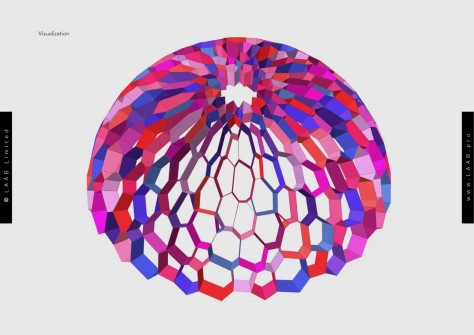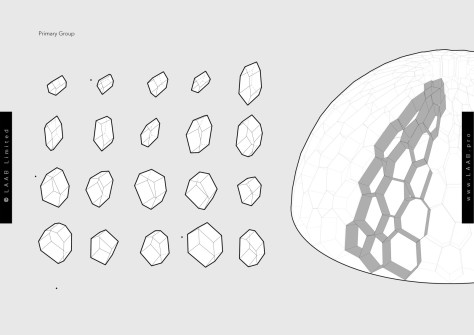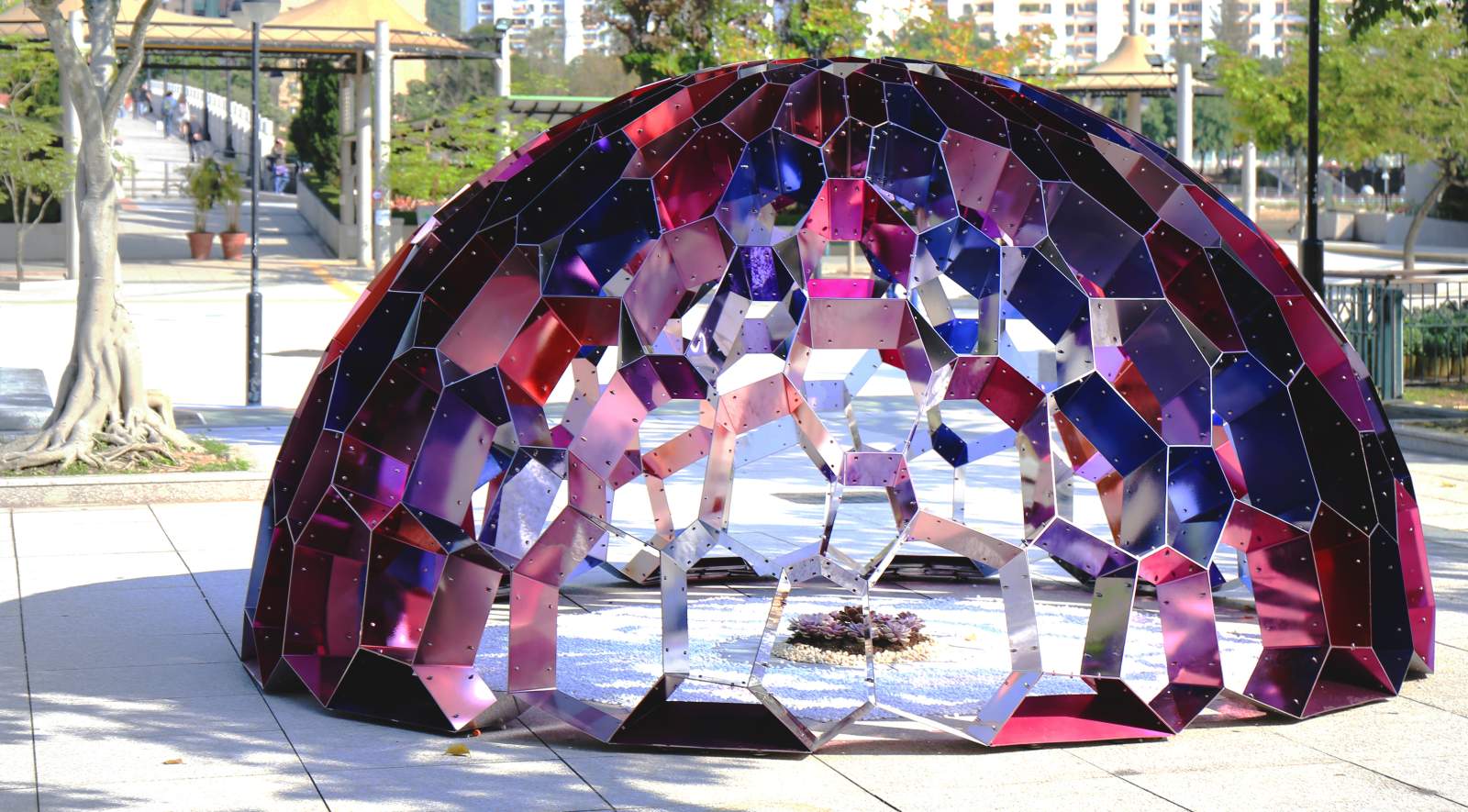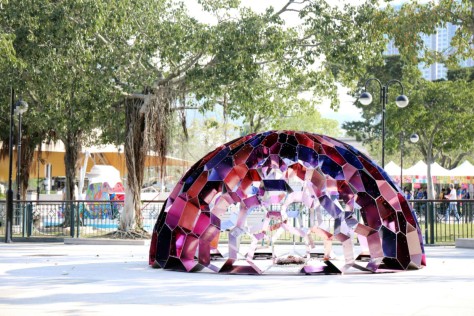
Kaleidome is a public art installation at Shatin Park— a local town park in Hong Kong. Kaleidome reflects a blossom of light-and-shadow interplay, offering constantly changing moments that captivate the souls of urban strollers. In this public artwork, viewers are also creators. Together, they make various compositions of color-tinted reflections that transform the empty plaza into a flourished garden.
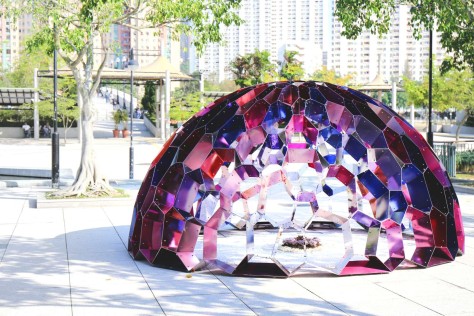
Overall Excellence:
Kaleidome is composed of 262 polyhedral cells of polished-stainless-steel mirror. Each reflective cell is a small window that frames the environment and multiples the vista. Like a kaleidoscope, it shuffles the images of river, trees, buildings, passers-by and flowers in the air, and tints the concrete plaza into a flourished place.
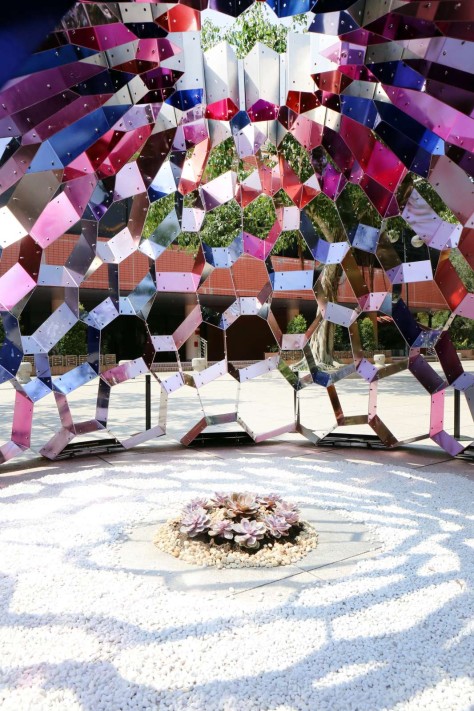
Looking at the oculus, you will discover a network of veins composed of ultra-thin, almost invisible polygon profiles, visually juxtaposing the tree branches in the sky. The cells packed in a curvilinear form also produce a dynamic visual effect, as they oscillate between opaque and transparent in viewers’ eyes.
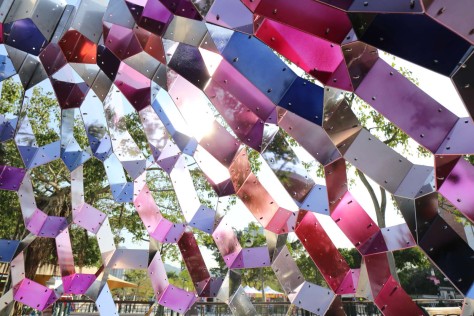
The project crosses the boundary between art and architecture. Pushing against the limit of height, area and budget, our team maximized the volume in a dome structure with minimum material consumption. Every edge or corner was carefully polished to ensure that it is kid-friendly.
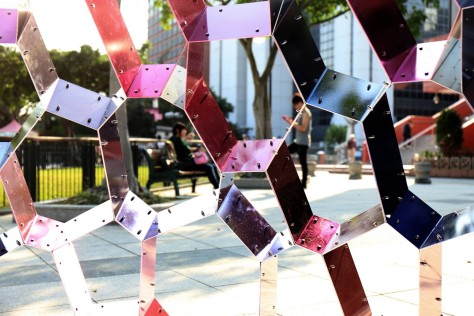
Use of Technology:
With advanced programming and precise digital fabrication technique, our team designed and manually constructed the Kaleidome with our own hands. The 262 polyhedral cells are made of polished-stainless-steel mirror in 22 shapes.
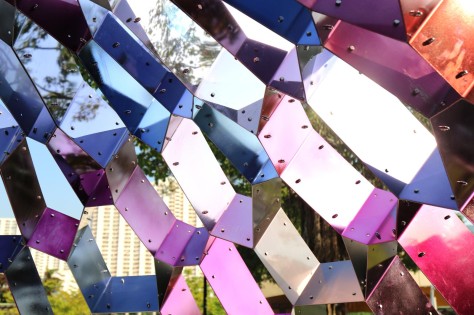
Each mirror was laser-cut and folded according to our parametric computer model. The cell is tinted in various shades of red and blue with a very thin layer of paint that preserves the reflectiveness of the original mirror finish. Not only did the parametric model streamline the design and fabrication process, but it also minimized the amount of materials on dome construction.
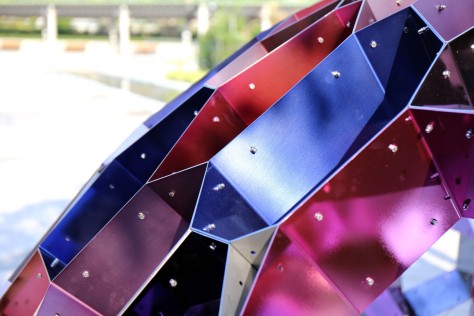
Mathematically speaking, Kaleidome is ‘Voronoi tessellation’ – a partitioning of the semi-spherical surface – into regions based on distance to points in a specific subset of the plane. In other words, it is a geometric diagram computed by taking pairs of ‘center points’ that are close together and drawing a line that is equidistant between them and perpendicular to the line connecting them. All points on the lines are equidistant to the nearest two or more source points.
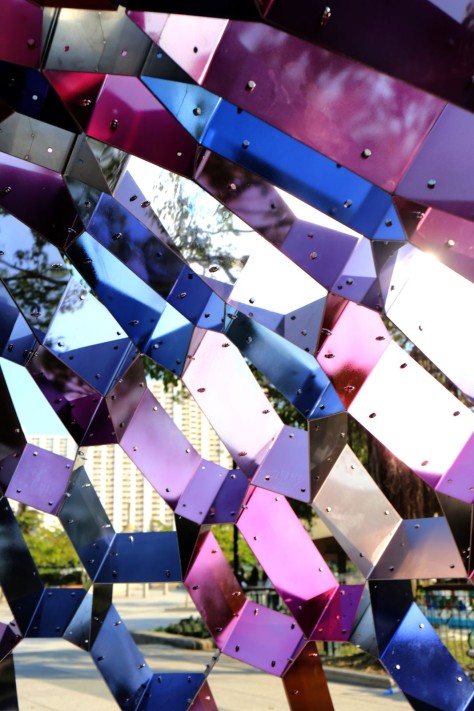
Impact in Asia:
This project has taken a fresh approach on public art project in Hong Kong. Unlike most public sculptures in Hong Kong, the visitors are encouraged to touch Kaleidome, or enter its space even, rather than just observing it from a distance. Between art and architecture, Kaleidome is a spatial intervention that invites interaction from its visitors.
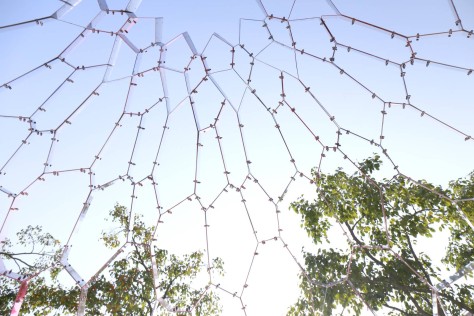
In Asia, Kaleidome can be seen as a pilot project of emerging digital fabrication technique and the Makers’ Movement. While production for most design is usually outsourced to a contractor, in this project, the designers are also the builders. The culture of designer-builder is increasingly popular as part of the Makers’ Movement and Digital Revolution. Source by LAAB.

Location: Shatin Park, Hong Kong
Architect: LAAB
Year: 2015
Images: Courtesy of LAAB
